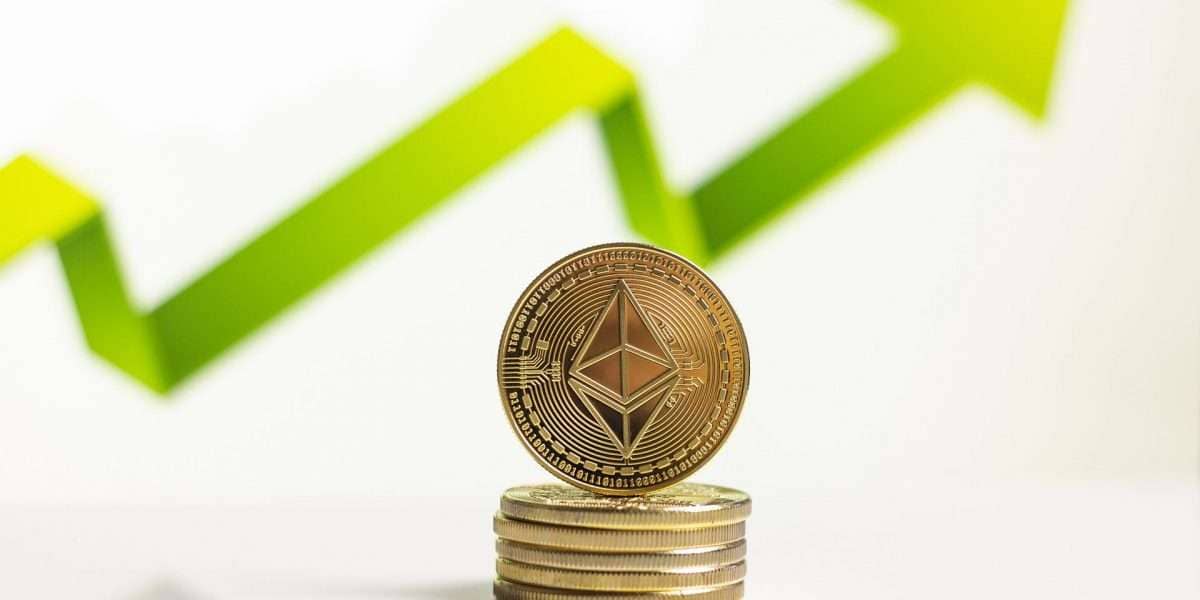Table of Contents
Okay, I'll expand on the argument for why Ethereum could reach or get close to $10,000 in the 2024/2025 bull run.
A Brief History
First of all, let's talk about Ethereum's history and why it's so important.
Ethereum was created in 2015 by Vitalik Buterin and has since become the world's second-largest cryptocurrency by market cap.
It was created as a blockchain platform for decentralized applications (dapps) and smart contracts.
It was also the first platform to popularize the concept of tokens, which are now a key part of the decentralized finance (DeFi) movement.
Ethereum had also been working on transitioning to a Proof of Stake consensus mechanism for years, which is more energy efficient and scalable than the Proof of Work mechanism used by Bitcoin.
This transition was completed in 2022 with the Merge, which saw the Ethereum main net combine with the PoS Beacon Chain.
Shanghai Update And DeFi

And now, the Shanghai update (EIP-4895) is set to launch in March 2023 and will resolve issues around staking, allowing users to withdraw their funds.
So, what does all this mean for Ethereum's future? Well, for starters, the move to Proof of Stake makes the Ethereum network more scalable, which is crucial for the growth of the DeFi movement.
DeFi is the use of decentralized applications to manage financial services, such as lending, borrowing, and trading.
Ethereum is the leading platform for DeFi. In fact, as of writing, around $59 billion is locked in DeFi protocols on the Ethereum network which is down from roughly $196 billion in November 2021.
Despite the decline and the bear market recovery, growth in DeFi is driving demand for ETH, and as more people use the Ethereum network and DeFi protocols, the demand for ETH will only continue to grow. This is why Ethereum is seen as a key player in the DeFi space and why it's likely to be a big part of the financial future.
Visa And Mastercard
Visa
Banks and financial institutions like Visa and Mastercard, who once dismissed cryptocurrencies as a passing fad, are now realizing the potential of the technology behind it.
The reason why banks and financial institutions are interested in Ethereum is because of its ability to handle large amounts of transactions in a secure, transparent, and efficient way.
This is something traditional finance struggles with, and blockchain technology like Ethereum provides a near-perfect solution.
Visa and Mastercard, two of the largest payment processors in the world, have both already announced partnerships with Ethereum-based projects.
Visa's Ethereum-based project, which became the first major payment network to settle transactions in USDC, aims to improve cross-border payments by using the stablecoin USDC, which is pegged to the US dollar.
Mastercard
Mastercard, the well-known payment giant, has taken notice of the growing trend of crypto and is making a big move to support select cryptocurrencies on its network.
Now, Mastercard isn't here to tell you to start using crypto, but they are here to give you the choice to transact digital value, whether it's in traditional or crypto form. It's all about giving you, the customer, the power to control your money how you want.
Not all cryptocurrencies will be supported on the Mastercard network. Only the stablecoins (USDC) that meet the four key criteria set by Mastercard will be included. These criteria include consumer protections, strict compliance measures, following local laws, and being able to be used for payments.
Mastercard has already taken steps to make this crypto integration possible. They have teamed up with Wirex, BitPay, and LVL to create crypto cards and have also been working with central banks around the world to explore the possibilities of new digital currencies. With 89 blockchain patents granted and 285 pending, Mastercard is well-equipped to bring about this change in the payments world.
Now, let's talk about market projections. While no one can predict the future, there are a lot of reasons to believe that Ethereum could reach or get close to $10,000 in the 2024/2025 bull run. For starters, Ethereum has already had a few bull runs in its history, and as the network continues to grow and mature, the demand for ETH is only likely to increase. Additionally, as more institutional investors and corporations get involved in the crypto space, the demand for Ethereum is likely to increase even further.
USDC And Ethereum
USDC is a type of cryptocurrency, also known as a stablecoin, that's pegged to the value of the US dollar.
In simpler terms, it's a digital asset that's meant to maintain a stable value, unlike other cryptocurrencies like Bitcoin and Ethereum, which are known for their volatility.
And here's where Ethereum comes in.
USDC is built on top of the Ethereum network.
That means that all transactions and information related to USDC are recorded on the Ethereum blockchain, making it secure and transparent.
So why did the creators of USDC choose Ethereum?
Well, one of the key benefits of Ethereum is its ability to support decentralized applications and smart contracts. This makes it an ideal platform for creating and using stablecoins like USDC.
Plus, the Ethereum network is well established and has a large user base, which helps to further increase the reach and adoption of USDC.
In conclusion, Ethereum has a lot going for it, from its history as a leading platform for decentralized applications and smart contracts, to its transition to Proof of Stake and its position as the leading platform for DeFi.
With the growing demand for trusted and solid DeFi applications, the growth of the crypto industry, and the current monetary policy environment, there are many reasons to believe that Ethereum could reach or get close to $10,000 in the 2024/2025 bull run.
So, whether you're an Ethereum holder or just considering getting involved, now is definitely a great time to pay attention to this exciting and rapidly growing project.
Matt is the founder of TechMalak. When he's not buried face-deep in the crypto charts you can find him tinkering with the latest tech gadgets and A. I tools. He's a crypto investor and entrepreneur. He uses a mixture of A.I and human thought and input into all his articles on TechMalak, further merging man with machine.





